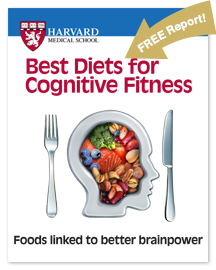
How — and why — to fit more fiber and fermented food into your meals

UTI in older women: Why postmenopausal women are susceptible to urinary tract infection, and what to do about it

Can a routine vaccine prevent dementia?

Some adults may need a measles booster shot. Who should get one and why?

Less butter, more plant oils, longer life?

Healthier planet, healthier people

Counting steps is good — is combining steps and heart rate better?

Appendix pain: Could it be appendicitis?

Can saw palmetto treat an enlarged prostate?

How does Ozempic work? Understanding GLP-1s for diabetes, weight loss, and beyond
Exercise & Fitness Archive
Articles
Two workout strategies that reduce cardiovascular disease risk
A 2024 study suggests doing a workout that's a combination of aerobics and strength training might reduce cardiovascular risk factors just as effectively as a workout that consists of aerobics only.
An easier way to do high-intensity interval training
A 2023 study found that people with chronic conditions who took part in high-intensity interval training in the water—called aquatic HIIT or AHIIT—experienced a similar boost in endurance (their maximum sustained physical exertion) as people who took part in land-based HIIT. An AHIIT workout includes a warm-up, such as treading water, followed by intervals of rest and intense activity (such as swimming laps or doing four or five pool exercises in a row, as quickly as possible), for a total of 30 minutes.
Stepping up activity if winter slowed you down
If you've been cocooning due to winter's cold, who can blame you? But lack of activity isn't good for body or mind during any season. Any day is a good day to start exercising, but if you aren't sure how to start, or if you have an obstacle to overcome, read on.
Hitting the activity mark
Common activity guidelines recommend a minimum of 150 minutes of moderate-intensity physical activity and two muscle-strengthening workouts per week. However, these targets are meant for a broad population, and for many older adults, hitting just the 150 minutes per week poses a challenge. Experts suggest breaking down the 150 minutes into manageable segments, like doing 30 minutes of activity five days a week, and even dividing those 30 minutes into 10 minutes of exercise three times a day.
Regular exercise improves brain regions linked with memory
A 2023 study found that people who engaged in moderate or vigorous exercise an average of four days a week had more brain mass in regions associated with cognitive skills like memory and learning, compared with people who did not exercise.
Fighting fatigue
Fatigue is a common symptom that can be caused by a whole host of factors, from medical conditions to stress and poor sleep. In order to ease ongoing fatigue, it's important to investigate and treat the underlying cause. Fatigue that doesn't respond to interventions or is severe or persistent should be brought to the attention of a doctor. It may be caused by a medical condition.
Band together for stronger legs
Using your own body weight for exercise is simple and straightforward, but sometimes you need to further challenge your muscles. Resistance bands are versatile, portable, and easy to use to strengthen legs. These four leg exercises with resistance bands will enhance your lower-body workouts.

How — and why — to fit more fiber and fermented food into your meals

UTI in older women: Why postmenopausal women are susceptible to urinary tract infection, and what to do about it

Can a routine vaccine prevent dementia?

Some adults may need a measles booster shot. Who should get one and why?

Less butter, more plant oils, longer life?

Healthier planet, healthier people

Counting steps is good — is combining steps and heart rate better?

Appendix pain: Could it be appendicitis?

Can saw palmetto treat an enlarged prostate?

How does Ozempic work? Understanding GLP-1s for diabetes, weight loss, and beyond
Free Healthbeat Signup
Get the latest in health news delivered to your inbox!
Sign Up











